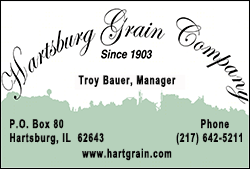|
 The Food and Drug Administration said making the
cellphone-sized device with the recovery drug naloxone available for
wider use could help save lives as opiod drug overdoses increase. The Food and Drug Administration said making the
cellphone-sized device with the recovery drug naloxone available for
wider use could help save lives as opiod drug overdoses increase.
The approval means emergency responders or even family members could
have an easy-to-use treatment in cases of suspected overdose of
opioids, which include pain drugs like oxycodone, morphine, codeine
and hydrocodone as well as heroin.
"It's really an effort to make this very usable," FDA Commissioner
Margaret Hamburg said.
More than 16,000 people die each year from prescription opioid
overdose in the United States, according to the FDA and the device's
maker, privately held drugmaker kaleo Inc.
Opioid overdoses are mostly tied to those addicted to painkillers
and heroin, but they can also happen accidentally in patients using
the prescription medicines legitimately to treat pain.

The hand-held device is called Evzio and automatically delivers a
set dose of naloxone, a drug ingredient already approved to treat
overdose patients that works by quickly restoring breathing.
Naloxone is now typically given through a nasal spray or a syringe
that must be injected under the skin or into the muscle, and has
been limited mostly to medical professionals at hospitals and
emergency rooms as well as a growing number of police officers and
other emergency responders.
The version approved on Thursday is small enough to be carried in a
pocket, the FDA said. Relatives and caregivers would still need
training and practice on how to use the device, and several doses
may be needed to revive someone, the agency added.
"Making this product available could save lives by facilitating
earlier use of the drug in emergency situations," Bob Rappaport,
head of the FDA division that reviews such products.
HEALTH EXPERTS WELCOME MOVE
The FDA's Hamburg said that while wider use of overdose treatment
was important, "the larger goal is to reduce the need for products
like these by preventing opioid addiction and abuse."
Health experts and other advocates trying to combat the effects of
drug addiction welcomed the device's approval in a conference call
with the FDA, and some even suggested doctors prescribe it along
with initial opioid painkiller prescriptions.
But some also worried the injector could cause some people to
dismiss the risks of opioid use because an antidote would be easier
to access.
FDA and other federal drug officials said Envio was not a substitute
for medical care and that it was essential that people who overdose
still get quick medical attention.
[to top of second column] |

It was not immediately clear how much the injector would cost or
whether health insurance companies, including the government's
Medicare and Medicaid programs, would cover it.
The device will require a prescription and will be available at
pharmacies this summer, the company said, adding it had not yet set
a price.
Meghan Ralston of the Drug Policy Alliance advocacy group, expressed
concern in a statement about costs and said people should use
"whichever form of naloxone is most convenient and affordable for
them." She called on manufacturers to ensure affordability.
A growing number of municipalities have stocked other naloxone
treatments and have begun training firefighters, police officers and
other emergency medical personnel on how to deliver the antidote.
Separately on Thursday, New York Attorney General Eric Schneiderman
said the state would equip every law enforcement officer in the
state with naloxone to help fight a surge in heroin overdoses. The
effort would be funded with $5 million recovered from drug
traffickers.
Schneiderman cited data from police in Quincy, Massachusetts, which
began requiring officers to carry naloxone in 2010. Since that time,
the police department has used the drug 221 times and reversed
overdoses in 95 percent of those cases.
Last week, Massachusetts Governor Deval Patrick, in a speech
declaring a public health emergency stemming from the abuse of
opioids, said his state would also make naloxone more widely
available.


(Additional reporting by Natalie Grover in Bangalore;
editing by
Michele Gershberg, Peter Cooney and Bernard Orr)
[© 2014 Thomson Reuters. All rights
reserved.] Copyright 2014 Reuters. All rights reserved. This material may not be published,
broadcast, rewritten or redistributed. |